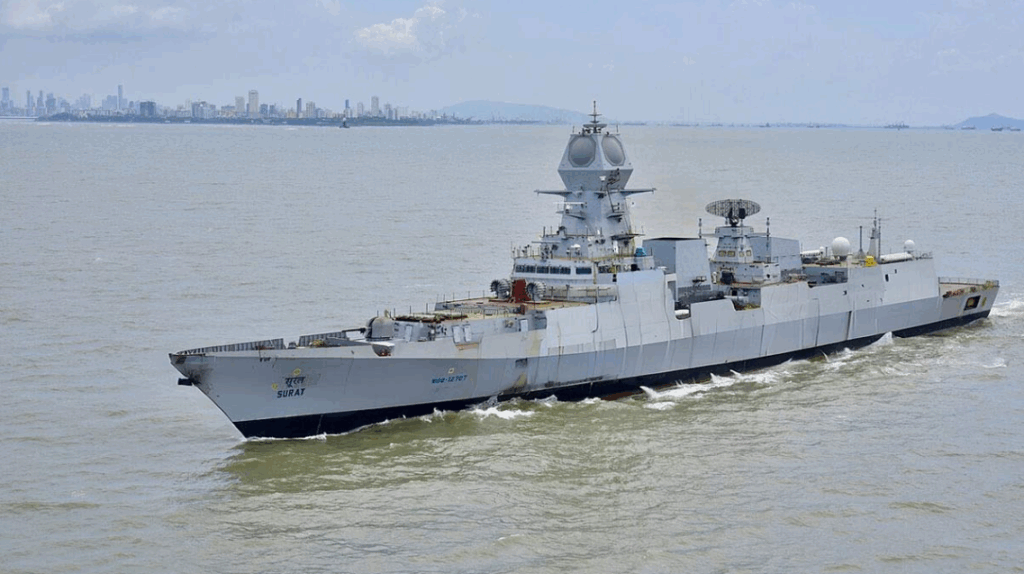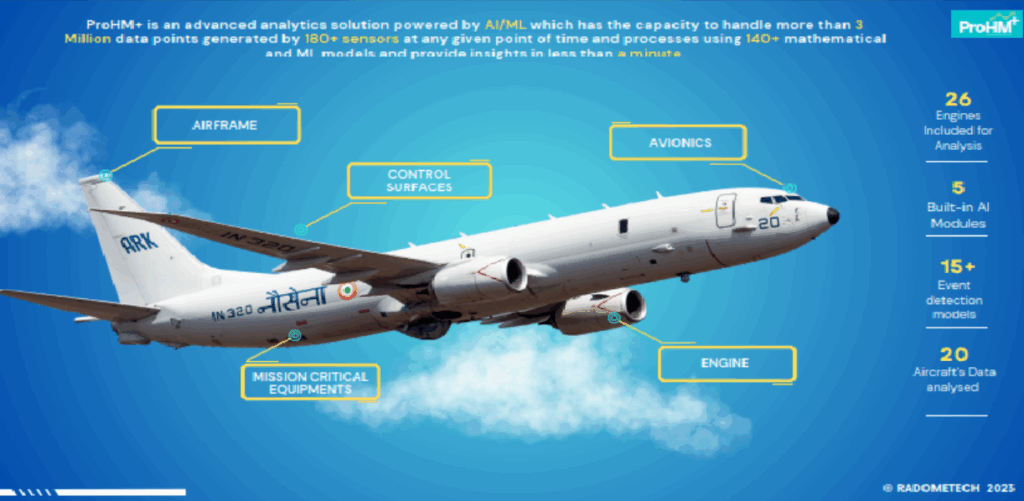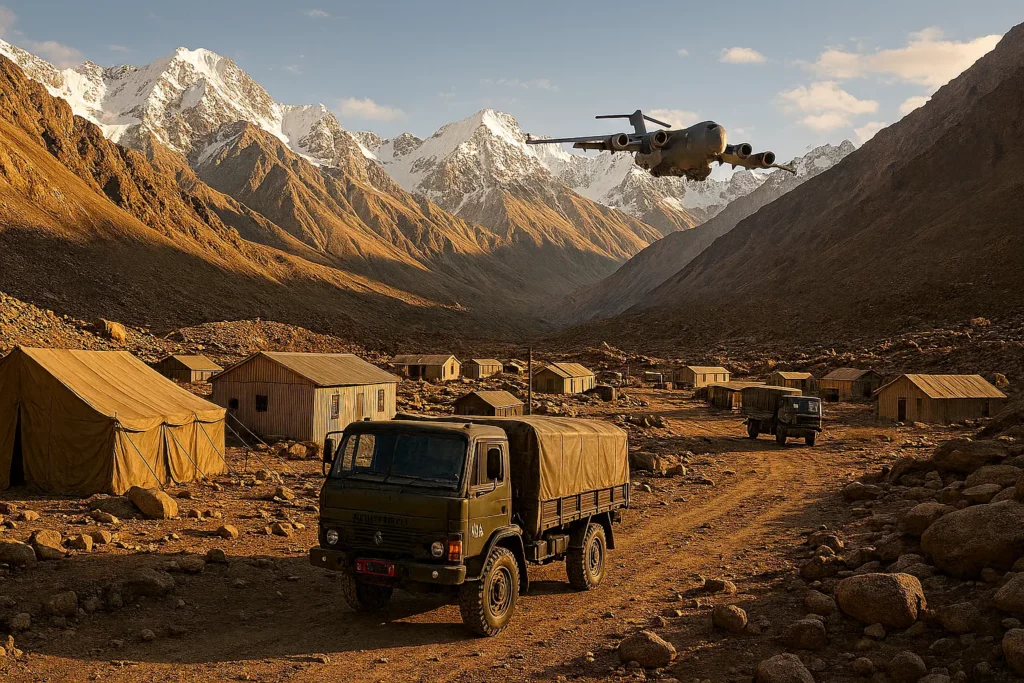Introduction
India’s defence establishment is increasingly leveraging Artificial Intelligence (AI) to modernize its vast logistics and maintenance infrastructure. From predicting when a fighter jet engine might fail to streamlining the delivery of supplies to remote outposts, AI-driven solutions are enhancing the efficiency and readiness of India’s military. The Ministry of Defence (MoD) has recognized this potential by setting up dedicated AI task forces and a Defence AI Council, and earmarking funds to drive AI projects.
This article delves into how AI is being applied in Indian defence logistics – highlighting developments in predictive maintenance, supply chain optimization, and readiness planning – along with case studies of initiatives by the armed forces, Defence PSUs, and the MoD.
AI-Driven Predictive Maintenance for Military Assets
One of the most impactful applications of AI in defence logistics is predictive maintenance. Instead of relying on fixed schedules or reactive repairs, AI algorithms analyze data from sensors and maintenance records to predict equipment failures before they occur. This approach allows the military to service aircraft, vehicles, and ships preemptively, minimizing unexpected breakdowns and downtime.
The Indian Air Force (IAF) has adopted AI-driven predictive maintenance for its fleet, analyzing engine and system health data to catch early warning signs of malfunctions. Such measures have already proven effective – the IAF’s use of AI-based predictive maintenance systems has reduced aircraft downtime by up to 30%, significantly improving fleet availability for missions.
AI-enabled Health and Usage Monitoring Systems (HUMS) and even digital twin models of aircraft are being used to simulate stress and optimize maintenance schedules, further boosting reliability and readiness.
The Indian Army is also investing in predictive maintenance for its ground vehicles and equipment. In late 2024 the Army, in collaboration with Bharat Electronics Ltd (BEL), established an AI Incubation Centre in Bengaluru with a mandate to develop AI solutions for maintenance and other domains.
A top focus area is “Predictive Maintenance: leveraging AI to address equipment failures and reduce downtime preemptively,” underscoring how critical it is to keep tanks, trucks, and artillery ready for action.
Similarly, the Indian Navy is beginning to integrate predictive analytics into naval engineering. New platforms like the INS Surat are touted as India’s first “AI-enabled” warships, equipped with intelligent systems to monitor onboard machinery and predict maintenance needs autonomously.

INS Surat, India’s first AI-enabled warship, being commissioned in 2025.
India’s domestic tech industry is contributing innovative tools for military predictive maintenance. For instance,
- Startup Radome Technologies has developed ProHM+, an AI-driven prognostic health monitoring platform. Supported under a MoD challenge for “AI in Supply Chain and Logistics,” ProHM+ was deployed by the Indian Navy at one of its air bases to monitor aircraft engine health.The system performs anomaly detection, fault diagnostics, and remaining useful life predictions for critical components. Such AI tools enable maintenance crews to replace parts just in time, preventing failures in fighter jets or helicopters that could compromise missions.

Optimizing Defence Supply Chains with AI
Beyond maintenance, AI is revolutionizing supply chain management in Indian defence manufacturing and logistics. The armed forces operate an enormous supply network – from ordinance depots and spare part warehouses to the production lines of Defence Public Sector Undertakings (DPSUs) like Hindustan Aeronautics Ltd (HAL) and Bharat Electronics Ltd.
AI technologies are being used to forecast demand, manage inventories, and streamline the flow of materiel to where it’s needed most. According to defence experts, “AI can analyse data on supply chain operations to optimise the delivery of supplies and equipment to troops in the field, helping reduce waste, save costs, and improve readiness.”
By crunching historical consumption data and variables like unit rotation or climate, machine learning models can predict what supplies – fuel, ammunition, spare parts, medical stock – are required at which location and time. This predictive logistics ensures that frontline units get essential resources on time, without overstocking or shortages.
Within India’s defence industry, AI-based supply chain solutions are emerging through public-private collaboration.
- BEL, for example, has already fielded AI products for the armed forces, and partnered with the Army to create the AI incubator focusing on logistics improvements.
- Private tech firms are also entering the fray. Radome Technologies’ platform LogiSmart is an AI engine for defence logistics that recently reached beta deployment. LogiSmart uses machine learning to analyze historical data and provide inventory and demand forecasting for military supply chains. Such systems can advise Defence logisticians on optimal stocking levels and reorder points for thousands of spare parts, or suggest the fastest and safest resupply routes, all based on data-driven predictions.
- The Department of Defence Production has likewise encouraged AI adoption in warehousing, inventory tracking, and procurement. In fact, one of the 75 AI-enabled defence technologies unveiled by the MoD in 2022 was an AI system for supply chain and logistics management (dubbed “PRO-HM+”), underscoring the priority placed on this area.
AI in Military Logistics and Readiness Planning
The ultimate goal of these AI applications is to enhance military readiness – the ability to respond swiftly and effectively to any operation. AI is helping Indian defence planners optimize logistics in a way that directly boosts readiness.
For example, the Army is experimenting with AI models that can simulate and plan complex logistics scenarios, such as mobilizing an armored brigade to a new sector or sustaining a high-tempo operation. By inputting variables into an AI-driven wargame or simulation, planners can identify bottlenecks (like limited road capacity or fuel shortfalls) before they occur and adjust plans accordingly.
Defence think tanks and academic institutions are working with the military to develop advanced war-gaming simulations powered by AI, which allow dynamic modeling of combat and logistic scenarios. These tools could inform everything from how much inventory to pre-position in border areas to how to route supply convoys to avoid predicted threats.
Even at the tactical level, AI aids real-time logistics decision-making. Indian Army officials note that AI algorithms now optimize supply operations and resource management, ensuring timely and efficient delivery of essentials to forward-deployed units. In practice, this might mean an AI system consolidating requests from units and scheduling drone or truck deliveries in the optimal sequence, or automatically re-routing supplies if a usual supply line is disrupted.
The Army has also begun using AI-powered drones and satellite imagery for logistics reconnaissance, surveying routes and infrastructure to support faster movement of supplies. All of these AI-driven efforts contribute to higher readiness by getting the right supplies to the right place at the right time, and by reducing the likelihood of critical equipment being out of action due to unexpected failures.
Notably, AI’s role in logistics extends to human resources and training, which are part of overall readiness. The Army is leveraging AI-driven simulations to create realistic training environments that improve troops’ preparedness and response times.
Meanwhile, the IAF has invested in upskilling its personnel in data analytics and AI, establishing a culture where airmen and logisticians can harness these tools effectively. Such initiatives ensure that the benefits of AI – faster decisions, predictive insights, and efficient processes – are actually realized in day-to-day defence logistics and operations.
Emerging Challenges and the Road Ahead
While India’s progress in deploying AI for defence logistics is promising, several challenges and considerations remain.
- One major hurdle is data quality and integration. AI algorithms are only as good as the data they learn from, so the military must aggregate vast, disparate data – from maintenance records to inventory databases – and ensure its accuracy. Modernizing legacy systems and digitizing records are ongoing efforts to enable AI readiness.
- There are also security and ethical concerns. Defence data and AI systems need robust protection from cyber attacks, and the military must build trust in AI recommendations. Ensuring AI-driven decisions are transparent and aligned with command intent is crucial so that human commanders remain confident in the outputs.
As noted by IAF experts, key challenges include “ensuring data security and integrity, addressing ethical concerns surrounding autonomous systems, and overcoming regulatory hurdles” as AI becomes more embedded in operations.
On the policy front, the Indian defence establishment is charting a clear roadmap for AI adoption. The MoD’s Defence AI Council and the Defence AI Project Agency (DAIPA) are guiding integration efforts and scaling up successful pilot projects. Collaborative programs like iDEX (Innovations for Defence Excellence) are bringing startups and DPSUs together to solve military logistics problems with AI solutions.
Going forward, experts emphasize the need for deepened public-private partnerships and a skilled workforce to fully harness AI. The armed forces have signaled their commitment by launching centres of excellence (like the Army’s Bengaluru incubator and the IAF’s AI Centre) and by training officers in AI and data science. This indicates a “whole-of-ecosystem” approach: incorporating the best of India’s IT talent and research institutions into defence modernization.
Conclusion
AI is set to become an indispensable force-multiplier in Indian defence logistics. Predictive maintenance is increasing the uptime of fighters, ships, and vehicles, smart supply chain systems are cutting waste and ensuring soldiers have what they need, and logistics planning AI is enhancing readiness for future conflicts.
These advances, grounded in current initiatives and case studies, demonstrate India’s resolve to fuse technology with military logistics in an era of rapid change. By continuing to address challenges pragmatically – securing data, building trust in AI, and investing in human capital – India’s defence establishment is paving the way for a more agile, efficient, and resilient logistics backbone powered by artificial intelligence.

